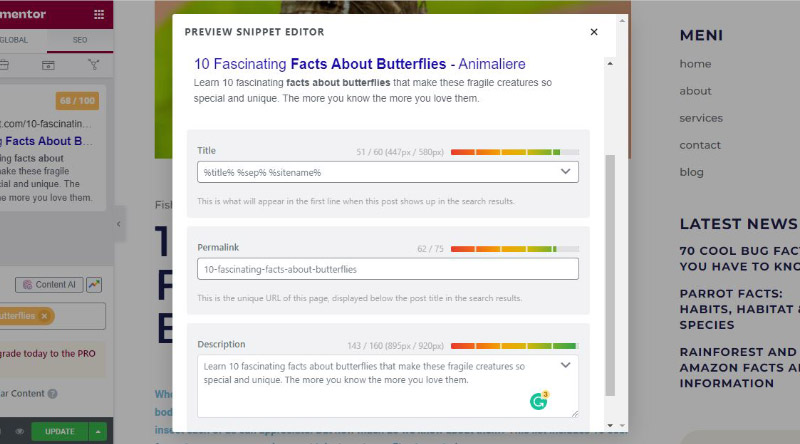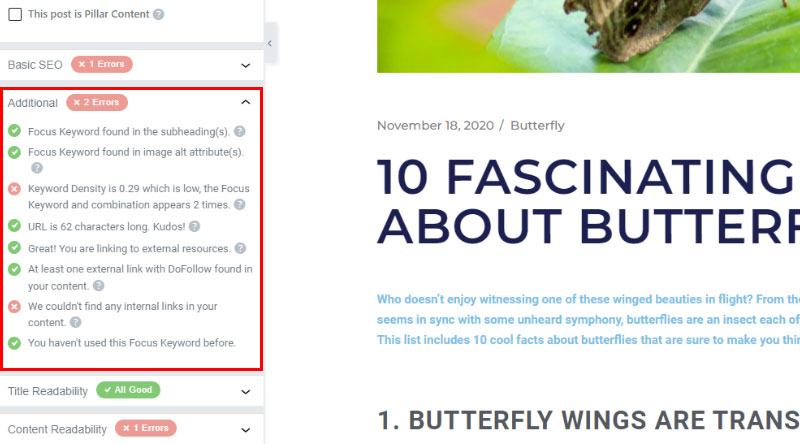
The Basics of Elementor SEO
In case you are running an Elementor website, you probably love how easy and intuitive everything is with Elementor. But when it comes to SEO, optimizing your Elementor website is everything but easy and intuitive unless you have the right tool. Luckily, Elementor nowadays integrates seamlessly with Yoast and Rank Math – the widely popular SEO plugins that made Elementor SEO easy for everyone.
Maybe in the early times of blogging, it was possible to stand out and achieve success simply by sharing quality content. But, the times have changed, and considering the sharp competition you are facing today whatever you do online, you’ll hardly be able to even get noticed unless you learn the basics of SEO. SEO helps you reach your target audience, achieve brand recognition, generate traffic, and increase conversion rates.
In this article, we’ll take a closer look at the basics of technical and on-page SEO, so that you can perform Elementor SEO all by yourself. Before we dive in, let’s just remind you what SEO actually is. Some common tips about SEO, in general, could provide a better perspective of Elementor SEO. Stay tuned to read more about:
SEO helps you do many things, but basically, it is a marketing technique that helps you improve your site’s ranking position and search engine visibility. It is a technique that takes time but most surely brings tangible results simply because it deals with organic traffic. This is a low-budget, long-term strategy that is essential for your website’s reach, brand recognition, and sales.
And while you can do SEO and have results without investing in any other form of marketing, however great your overall marketing strategy is it will not bring you the desired results unless it is backed up with well-done SEO. So, don’t think about Elementor SEO as optional, it is absolutely necessary to do it, and you don’t have to be an SEO expert to do it well. It is always a good idea to think about SEO from the very start and choose an SEO-optimized WordPress theme.
If you are entirely new to this field, you should also keep your eyes wide open to avoid making the most common SEO mistakes.
Technical SEO refers to the aspect of SEO that aims at ensuring your content is crawled and indexed by Google. The first step to positioning your website well on Google’s rank is for Google to examine its index for relevant pages. Whenever Google recognizes your pages match well the query, your site appears in the user’s search results.
So, the goal of technical SEO is to make sure your content is indexed appropriately. The logic that Google applies when ranking a site is simple – the result that most precisely refers to the user’s query will appear at the top of the ranking list. The better you rank the better your click-through rates will be, and technical SEO is the first thing to do to ensure this goal is attainable for you.
We’ll now go through all the most important aspects of technical SEO for Elementor so that you can learn how to easily do it by yourself. Let’s see how to get started:
Check Your Page Speed
Page speed is a huge ranking factor for Google. Not to mention how your users may react if they experience slowly loading pages. To ensure your website performance is optimal, it is essential that you check your website’s speed on a regular basis so that you can fix any speed issues as they occur before they leave any consequences.
Use Internal Links
Internal links are important as they signal to Google where your webpage stands within your website’s hierarchy. So, whenever you are adding new content make sure it contains relevant links to your old content. That also goes for the old content – don’t forget to add links to the relevant new content into your older posts.
Use Outbound Links
Aside from raising your chances of getting backlinks, external links help Google grasp the kind of relations you share with other websites. In the long term, external links help you build a reputation and authority and also keep your visitors coming back to you as a valuable resource.
Check Robots.txt File
Every website has a robots.txt file whose purpose is to instruct Google’s crawlers. In case this file configuration is not proper, the search engine may be prevented from indexing your site. To check if your site is visible to Google, you can use a robots.txt tester that is made exactly for that purpose. It is also possible to use this file for defining more precisely which parts of your websites the crawlers should access and which they should overlook.
Your SEO in general largely depends on how well Google understands the content and context of each page on your site. The better search engines understand what your page is all about the bigger your site’s chances of appearing in relevant search results. So, Google needs to understand your content and that is the ultimate goal of on-page SEO.
For Elementor SEO, as we have mentioned, it is vital to use a compatible SEO tool, like Rank Math. Rank Math is a great, very user-friendly SEO plugin that comes in a free and premium version. We will use it to demonstrate how OnPage SEO is done.
So, after you install Rank Math, you will notice the new SEO tab in Elementor.

The first step in optimizing your page is to optimize meta title and meta description. Without the plugin, you would have to switch back and forth from the admin dashboard to Elementor’s editor, but with Rank Math, all is easily done via the editor. Now, start by clicking the Edit Snippet button, to access all the options:

Here you can easily change the title, enter the description that contains the keyword, and also adjust the permalink.
You can also optimize how your post will look on social media, just click the Social tab and make adjustments you find necessary. You can change the image, title, description that will show up on social media.

Next, define your focus keyword. And then look at the preview to check your SEO score. In our case, the score is 68.

If you are not happy with the score (and we are certainly not), keep scrolling to see the plugin suggestions for improving your SEO.

In our case, it seems we need to include the keyword at the beginning of the article as well as throughout the text. We can do that immediately and check if the score improves. After following Rank Math’s suggestions, the score went up a bit, but there are still some things we can do.

To check what else needs to be done to improve on-page SEO, click the next tab Additional, and go through all the suggestions.

Obviously, we missed some of the SEO basics, there are no internal links, focus keyword needs to be used more frequently, and an image with a focus keyword would be great. Bear in mind that although you need to take all the suggestions into account, you also need to keep the natural flow of the content.
In the Title Readability section, we managed to do everything perfectly, so no need to make any changes in this department.

The next very important aspect of on-page SEO is content readability. You know how important it is for a text to be well organized, bulleted, segmented, with bold highlights and a balanced distribution of content. No one will stay on a page with one huge section that seems to never ends. Adding a table of content also adds a few significant points to your overal SEO score.

There is a way to quickly add a table of contents to your article, without having to skim the whole text once again. With Qi Addons for Elementor, a tool that comes with 60 free and more than 40 premium widgets and a powerful pack of Elementor extensions, it is possible to add TOC in just a few clicks. This tool automatically creates TOC based on the article content.
Another thing that you can do quickly without having to dig in too deep, is to add structured data (Schema Markup) to your posts and pages. The purpose of schema mark-up is to take advantage of structured data to influence the way your site appears in search engine results pages and help it stand out among all the other search results. You can choose from 13 different types of Schema Markup and configure them for each page with Elementor without dealing with a line of code or leaving the editor.

And there you go, the basics of on-page SEO are covered. You can now continue to explore the possibilities that come with using Rank Math.
In Conclusion
By now, you surely understand how important SEO is for your website. If you had any prejudices regarding dealing with SEO by yourself, this article should have proven that you can learn and apply Elementor SEO even without having to consult an SEO expert. It is also important to understand how SEO works so that you can implement its rules immediately in the process of creating the content, to avoid stuffing your articles with keywords in an unnatural manner.
We hope this article was helpful. If you liked it, feel free to check out some of these articles as well!





